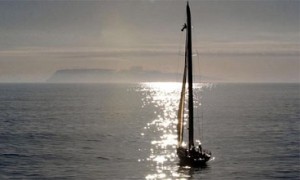 Since the dawn of recorded history, there have been stories of the trials and tribulations of heroic sailors traversing hundreds of miles to reach their destination. Some were merchants with precious cargo, some soldiers heading at full speed to or from a crucial conflict, and others were explorers, venturing out into uncharted waters.
Since the dawn of recorded history, there have been stories of the trials and tribulations of heroic sailors traversing hundreds of miles to reach their destination. Some were merchants with precious cargo, some soldiers heading at full speed to or from a crucial conflict, and others were explorers, venturing out into uncharted waters.
We’ve all heard tales of bravery and tragedy on the open waves. So how about making a long distance trip yourself? If it’s something that gets your heart beating a little faster, then read on.
Long distance sailing these days is a little more structured, and certainly a lot safer. However, it’s still one of the most challenging undertakings for an advanced sailor, and is certainly not without its risks.
Here are some key tips to bear in mind that should help keep you secure and comfortable on your voyage.
Obviously, long-distance sailing requires an ample supply of food. If you’re chartering a boat, you’ll want to hire a proficient, well-trained cook. Ideally a competent crew will come with its own cook, but check with your captain to be sure.
If you’re sailing a small vessel yourself, with a partner or friends, you’ll have to take care of the cooking yourself. Safety is a big factor in the galley – wedge strap or tie everything down that might slid around, especially sharp objects and knives. Stock up on staples at every port, and keep things varied. Tinned and canned food is obviously sensible, but don’t leave out fresh veg and specialty items – they’re great for breaking up up the standard dinner time routine.
It goes without saying that you’ll need a vessel capable of making the voyage and braving the inevitable rough waters and weather along the way.
If you plan to use your own boat, make absolutely sure that it’s fit for purpose. It’s a good idea to consult your local yachting club, and also an experienced long distance captian if possible – you need to be absolutely sure that your boat is up to the task.
If you plan to charter a boat, read the reviews of different models from an established source first. “Cruising World” is the authoritiative publication, and it provides detailed reviews of hundreds of different sailboats. However, always consult your yacht club and experienced sailors before committing to a particular boat or trip.
This might be the most essential skill involved in long distance sailing. You absolutely must be able to determine your position accurately, plot a safe route and navigate adverse conditions as they arise.
Fortunately, there are several modern tools that make your job easy such as radios, GPS positioning and detailed weather forecasts.
Nevertheless, you must have a fundamental understanding of positioning and navigation, and also be familiar with the types of conditions you can expect in certain areas. The weather patterns in the gulfstream, for example, are very different from tropical conditions.
Rather than reinvent the wheel, it’s an excellent idea to take advice from those who have gone before you. Many optimum cruising routes have been determined, and you’d do well to follow an established pathm where waters have been charted and conditions occur with a degree of predictability. The excellent “World Cruising Routes” by Jimmy Cornell is the definitive source on this front.
However, even when following an established route, you’ll inevitably encounter less-than-ideal conditions at some point in your voyage, and be forced to alter your route accordingly. You’ll need to locate secondary ports that you may not initially aim to stop at, but which might be necessary should you encounter adverse conditions.
Obviously, unexpected conditions affect other time-dependent factors – you’ll need to make sure you have enough provisions on board to cover delays and detours, and your date of arrival at key destinations simply can’t be determined precisely in advance – a rough estimate will be the best you can come up with.
Long-distance sailing is an exciting prospect. Of course, it goes without saying that you’ll need lots of sailing experience and an advanced level of competence before you’re ready to make the trip. If it’s something you’re looking to take on in the future, then one or more of our boating courses are perfect for shaving months off your learning curve and building the key basic and advanced sailing skills you’ll need for your voyage.